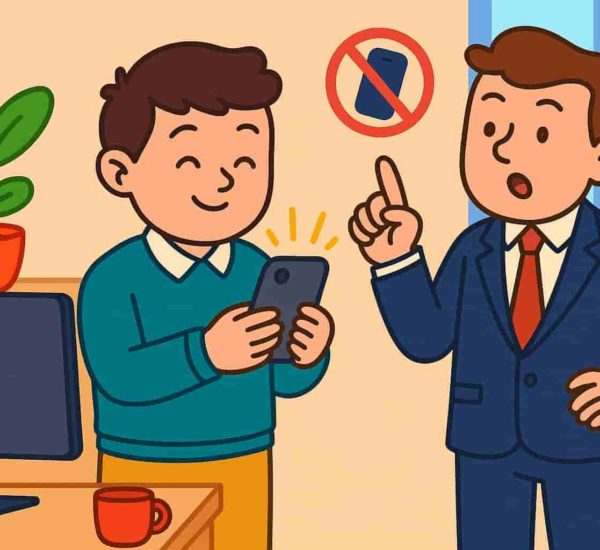Businesses can flounder as quickly as they flourish. When a business faces a downturn, it’s forced to cut the operational costs, and one of the biggest expenses is payroll. So naturally, companies tend to scale back their workforce. So if you have been hearing words like furlough, being laid off, reduction in force, or termination of contracts, the company is probably going through this period.
Furlough vs laid off vs fired (or terminated) are all an extreme measure, often leading to meltdowns and bitterness, no matter how they’re done. Sometimes simply because the companies aren’t sure of what the difference between each is, these terms are used interchangeably. However, this is a stark difference between furlough and layoff, or temporary layoff, furlough, and unemployment.
In this article, we’re clearing your doubts! We’ll tell you all about furlough, the difference between furlough vs laid off, reduction in workforce, the benefits of furlough and layoff, and all the questions you have.
What is furlough?
Furlough refers to a temporary reduction in work hours, work days, or other reduction in pay. Companies most commonly furlough workers when there is a sudden, temporary, and unforeseen change in market conditions that depresses the demand for their products or some sort of supply chain disruption that leads to a company not being able to work at its full capacity. If one goes through the furlough definition or the furlough meaning, it simply means that it is a mandatory temporary leave of absence from which the employee is expected to return to work. It also refers to a temporary reduction in scope of work which will be scheduled to its full scope as and when the circumstances allow.
These employees will still be paid by the organization and will retain some or most of their employee benefits, but they will only be paid for the hours served, and won’t be paid a fixed salary like before. This is usually done to bail the organization out of a particularly nasty financial stress. In most cases, furloughing is better than laying off employees that strip them off any employment benefit that the organization owes and off the employment too.
What does it mean to be furloughed?
For an employee, as per The Fair Labor Standards Act (FLSA), it depends on whether he or she is non-exempt or exempt.
Exempt employees are those who are exempt from overtime due to their professional stature in the organization. They have to belong to certain categories of jobs such as executive, administration, computer operator or other categories specified in FLSA The furlough pay for such employees resorts to a full-working day’s pay if they do so much as answering a mail during their furlough leave.
On the other hand, non-exempt employees are those who are entitled to overtime pay and minimum federal pay, as per the provisions of the Fair Labor Standards Act. Furlough pay for these employees means payment for the amount of work done or the number of hours worked.
What is layoff?
Laid off meaning is when an employee is asked to resign officially from the task and division that he or she was a part of. Technically, layoff refers to a situation that leads to the termination of a person’s status as an employee. That means the person concerned is no longer required to serve the organization and receive benefits and wages for the same. A la yoff usually happens as a result of economic downturns or due to the shutting down of certain divisions. It can be both temporary or permanent in nature.
Temporary layoff happens when the suspension of employment is not permanent in nature and the employee can be rehired once the situation improves. However, in many cases the layoff is permanent.
What is termination?
Termination of employment refers to a situation that results in ending a person’s duration of work with the organization. It can either be voluntary in nature if the employee chooses to quit or involuntary when the company decides to let go of the employee. The former often transpires in the form of resignation, while the latter happens when an employee is terminated for a cause or a specific reason.
In most of the cases, the termination clause is stated in the employment letter which is given at the time of hiring. The letter states the circumstances that may lead to termination.
Termination depends on whether the organization is an at-will one or not. In the US, most of the organizations work on an at-will basis, which means both the employers and employees have the right to free themselves of the service contract without providing any notice unless done for basic courtesy.
However, one has to remember that wrongful termination on the basis of discrimination, payback, or any illegal act can be questioned or even reported.
Contrary to furlough or layoff, termination is a permanent process. In case a terminated employee wishes to come back, a rehiring process is initiated. The old contract, however, comes to a permanent end.
Furlough vs layoff vs termination: The basics
Furlough, layoff, and termination, all three are different methods of reduction in force. However, the purpose and method differ.
A furlough may place the employee on an unpaid leave of absence for a predetermined time period. This does not strip the person off of his or her employment status. A furlough is usually temporary in nature.
A lay off may take place when the organization is going through a restructuring process or may have to shut down a particular division, leading to letting go of a part of the workforce. The lay off may be temporary or permanent in nature, depending upon each circumstance.
A termination happens when the employment contract comes to an end, due to internal reasons or breach of the conditions mentioned in the original contract. It is permanent in nature.
Differences between Furlough vs layoff
There are quite a few arenas where conditions differ from when an organization furloughs employees and when it lays them off. The difference between furlough and layoff is important and should be noted. Here are a few.
1. Nature
Generally speaking furlough is temporary in nature whereas a layoff is permanent. While on furlough, the employee continues to technically remain an employee (stays on rolls) whereas getting laid off severs the employee-employer relationship. All other things below follow from this basic difference.
2. Paid time off
A furloughed employee may or may not be entitled to paid time off which depends on a prior conversation with the employer. A laid off employee, however, is not entitled to paid time off.
3. Benefits
Furlough period may still entitle an employee to get benefits coverage. Companies are also required to keep paying the premiums for any insurance cover they have on behalf of the company, even though they are on unpaid time off. On the other hand, benefit coverage ends when an employee is laid off.
4. Severance pay
When an organization furloughs employees, they are not being laid off or terminated and are still on the rolls of the company, legally. Furlough pay does not entail any separation or severance pay. On the other hand, when an employee is being laid off, severance pay has to be given, in sync with the respective state laws and the final agreement between the organization and the said employee.
5. ACA impact
Organizations with 50 or more employees are obliged to offer coverage to 95% of their full-time employees, under the Affordable Care Act. While furloughed employees still remain eligible for the same, it may initiate penalty owing to the mandatory leave provision. On the other hand, laid off employees are not covered under ACA.
6. The WARN impact
The legal requirements for a layoff include adhering to the standards of the WARN Act, which stands for Worker Adjustment and Retraining Notification Act. Under this, an employer has to give a minimum notice of 60 days before the layoff. This is usually a mandate for organizations with more than 100 employees who are thinking of laying off at least 50% of the workforce from a single site. This is not required when the company furloughs employees. However, it may have its own ‘mini WARNS’ for the same.
7. Unemployment benefit
One of the most basic and the most important questions to ask is this: Can furloughed employees collect unemployment? The answer is yes. But so can laid-off employees. Though the laws may differ from state to state, most of the places offer unemployment benefits up to 26 weeks.
The differences between furlough and layoff should be understood well before undertaking the decision to exercise any of the two. Keep in mind the key difference; furloughs are temporary and layoffs, more often than not, turn out to be permanent. Furlough vs laid off can be a tricky question, but if you know the facts well, you can sail through the situation well.
Choosing between a furlough and lay off
Furlough vs laid off is one debate that every employer or organization goes through when the circumstances demand so. The best way to choose whether you wish to furlough your employees or lay them off is by evaluating your business situation and concern at the moment.

Here are three criteria you may wish to keep in mind while making the decision:
1. Team’s preference
The decision is about them. It is important to involve your team in the discussion and be frank about the current situation. Your team is composed of experienced personnel across all departments. Make use of their knowledge to come up with a fair decision at such times.
2. How long is the business going to be affected
This is another important question that you should ask. Consult your finance department and figure out the long and short of the situation. If the circumstances are only temporary in nature and the organization is sure to find its footing in a few months’ time, go for furlough. However, if it is more serious than that, lay off is a better option.
3. Availability of relief
Another important factor is whether or not you are available for federal benefits such as reliefs provided to small businesses during emergencies. Again, figure out how long your business is going to be affected and if the relief will manage to sustain the business and your employees till then.
It is important to keep your advisors from the finance department and the HR department close enough to figure out the best-case scenario.
Can you get a new job if you are furloughed?
Another factor which comes into consideration while looking into the whole furlough vs laid off situation, is how can the employees benefit from the situation which is in a way adverse for them. While lay off may be a tricky period, the furlough period is an excellent time to upskill. This is when you can take a professional step back to lend a training hand to your employees, so that their future is secured, whether or not they continue working with you post the furlough period. Here are a few ways to do it:
- Encourage them to jump into higher-growth areas
- Educate them about better courses that can refine their skills
- Push them to attend upskilling seminars
- Ask them to indulge in conversations in the relevant circles and create networks
- Increase their overall market value by training them
Furlough is a phase that can turn a bane into a boon for the employees if utilized perfectly. You can use this time to upskill, start freelancing or even consider starting your own business.
What are the benefits and drawbacks of furloughing or laying off employees?
One has to consider the pros and cons of letting a part of the workforce go, whether temporarily or permanently, before indulging in either furloughing or laying off employees. Here are a few pros and cons that may help make that decision:
Advantages
- This can give way to a ‘rotating’ schedule which reduces hours for everyone, reduces cost for the organization, yet, on the whole, gives complete productivity
- Layoffs are known to free a lot of cash flow in a short span of time
Disadvantages
- Laying off may initiate the need for rehiring and recruiting, which can be a costly and time-consuming affair
- Furloughed and laid-off employees are still eligible for quite a few benefits which can be a burden if work that’s being getting done is not as much
- Bargaining options and employer-employee frictions may accrue
Furlough benefits or layoff benefits, they all point towards the same thing, a cost-saving scenario, on a temporary or permanent basis, depending on the option exercised. On the other hand, the cons are tilted towards employee distrust. Consider all of the above while analyzing your current situation, to finally pick the most feasible option.
Is it more apt to furlough employees or to lay them off?
It is important to come to a fair decision that is beneficial to the organization and at the same time does not affect the employees in a negative manner. Here are a few things to be cognizant of, while deciding whether you wish to be an organization that furloughs employees or one that lays them off:
- Create a plan on how the current crisis can be best dealt with
- Communicate your thoughts to your employees in an honest manner
- Be aware of the legal repercussions
- Make sure you keep in touch with the furloughed employees
Keep all of the aforementioned in mind while making a decision.
Frequently Asked Questions about furlough and layoffs

1. Can a furloughed employee take annual leave?
Yes, the employee can take annual leave during the furlough period. However, this is subject to the state rules and regulations and internal agreements. Many have relaxed the regulations in favor of the employees, owing to the ongoing pandemic situation. The employers, in such cases, are required to pay the normal rate of payment and are not allowed to reduce or cut any part of it.
That being said, there are employers who may not be in a financial position to pay the full amount of annual leave to their employees. In such cases, the employer can refuse an annual leave request by giving sufficient notice.
2. Can an employee on maternity leave be furloughed?
Depending upon the state laws and other organizational rules and regulations as stipulated at the time of employment, an employee on maternity leave is entitled to any family-related pay or statutory maternity that she is entitled to. The employee is also eligible to receive benefits under any retention scheme that is started to counter the financial effects of the pandemic. Further, once the maternity leave is over, the employee may request the employer to extend the furlough period and agree to receive a lower percentage of pay.
3. How to deal with the bank holidays that fall within the furlough period?
This depends on the original contract between the employer and the employee. If bank holidays are covered in the contract, employers should either pay their employees for the bank holiday that falls under the furlough period or give them a full day’s leave sometime later.
4. Does annual leave accrual take place during the furlough period?
Yes, unless an agreement or discussion between the employer and employee suggests otherwise, annual leaves will continue to accrue during the furlough period.
5. Can employers make employees redundant during the furlough period?
Yes, the employers are not required to wait until the furlough period gets over and can make the employees redundant. However, the employer is required to comply with the usual procedure. This is subject to the laws of the state and any agreement between the employer and the employee.
6. Do employees need to agree to be furloughed?
This depends on the employment contract and whether it contains an express lay off clause. If it does not exist, the employee will need to agree and will be paid 80% of the salary while furloughed. This whole scenario will be achieved via a Furlough Leave Agreement.
7. With reference to the last question, are employers required to pay the remaining 20%?
No. While an employer may choose to do that out of goodwill, there is no legal binding to top up the employee salary to 100% of the salary.
8. What is a Furlough Leave Agreement?
A Furlough Leave Agreement is a slight variation to an employee’s contract of employment, and requires the signature of both employee and employer. This document is an agreement to be furloughed on the employee’s part and also a confirmation on any salary reductions during the furlough period. The agreement also states the circumstances that will end furlough leave, along with a lay-off clause for any future reductions in the scope of work.
9. How long can the employee’s furlough period last?
To be eligible for funding, a furlough phase or leave must be given in minimum blocks of three weeks. Till now, there is nothing that prohibits rotating furlough leave amongst employees. This, however, is possible, provided each employee is off for a period of at least three weeks.
10. Is there a no-work policy in effect when an employee is on Furlough Leave?
Yes. The cardinal rule of the furlough period is that the employee must not work beyond the stipulated hours for which he or she is being paid. This means not answering calls or emails as well. However, they may undertake volunteer work, since such services do not contribute to the revenue of the employer.
Furlough vs layoff: A tough choice but a necessary one
No organization chooses to let go of the workforce unless there are internal matters which are unsolvable, thus leading to termination, or external forces leading to financial insolvency, leading to furloughing or laying off.
An intelligent way to deal with it is to know your facts, acts, and ethics, get them together, and then make a decision. It’s also a good practice to keep your employees in the know-how and make transparency a part of your culture, even through the tough times.
Have you found the difference between laid off vs fired vs furlough, or has your company experienced a period where you had to make these tough decisions?
Share your stories with us on Twitter and tag us @HarmonizeHq, so we can learn from you.



